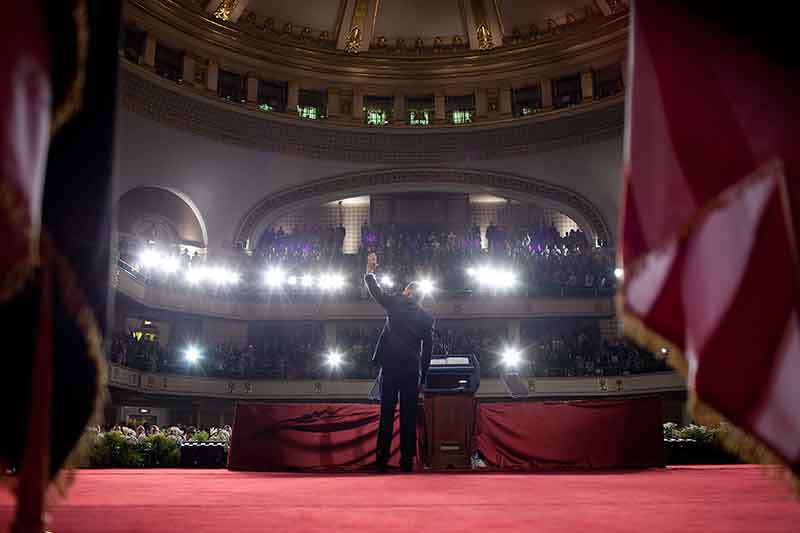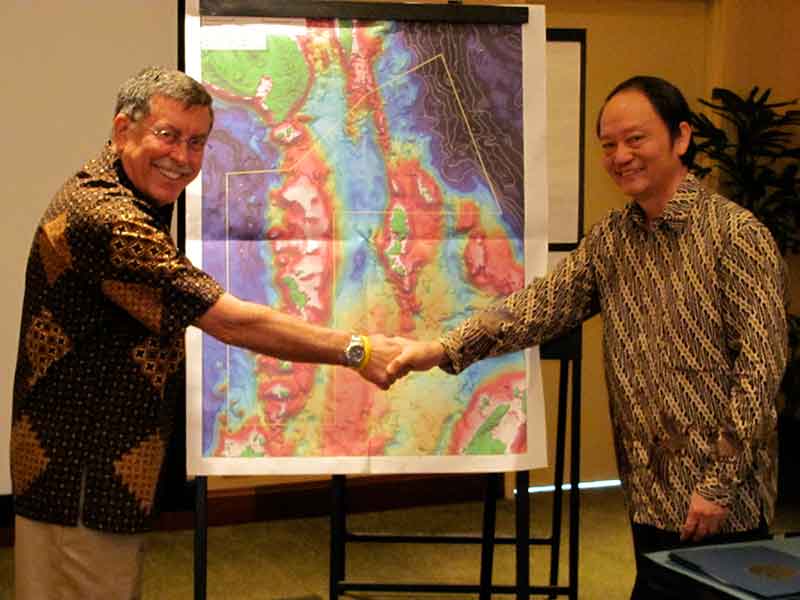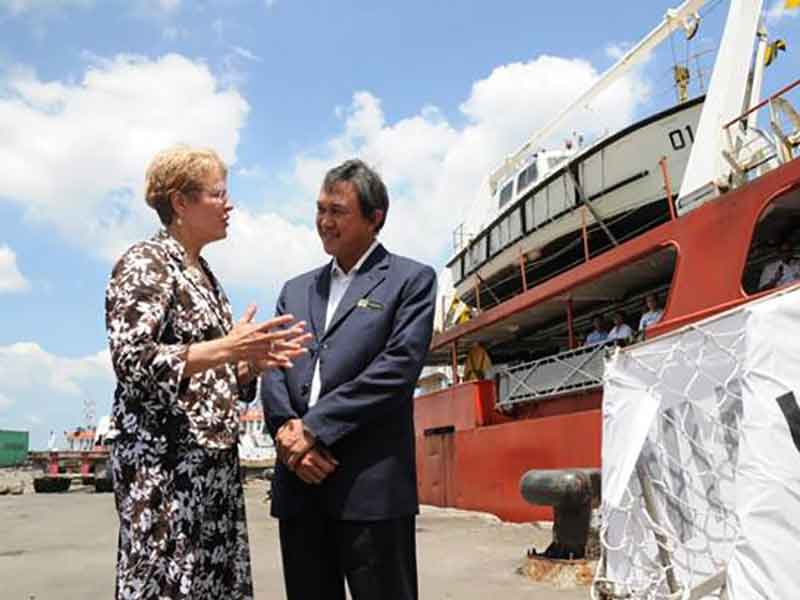
by Dr. Steve Hammond, U.S.-Co Principal Investigator
Dr. Wirasantosa Sugiarta, Indonesia-Co Principal Investigator, INDEX-SATAL 2010

In June 2009, President Barack Obama delivered a landmark speech at Cairo University on furthering America’s relationship with Muslim communities around the world. Science and technology collaborations play a critical role in developing the new relationships called for by the President. Image courtesy of Chuck Kennedy, Official White House Photograph. Download larger version (jpg, 2.8 MB).
The Indonesia-USA Deep-Sea Exploration of the Sangihe Talaud Region (INDEX-SATAL 2010) expedition kicks off a new era of scientific cooperation between the United States and Indonesia. President Susilo Bambang Yudhoyono of Indonesia encouraged the joint expedition and it has been strongly supported by the U.S. Ambassador to Indonesia Cameron Hume. The joint-expedition also advances the approach called for by President Obama in his landmark June 2009 speech at Cairo University.
This partnership is just one of several initiatives that directly support a recently developed Science and Technology agreement between the two ocean Nations.

INDEX-SATAL 2010 Co-Principal Investigators Dr. Sugiarta and Dr. Steve Hammond shake hands after agreeing upon the planning area of operations for this summer's expedition. Image courtesy of the NOAA Office of Ocean Exploration and Research. Download larger version (jpg, 5.1 MB).
Because the health of the environment and economy go hand-in-hand. The extraordinary natural resources in Southeast Asian waters sustain the lives of hundreds of millions of people in the region and benefit many millions more worldwide. Mapping and discovery data collected through this partnership will help to better understand, use, and protect ocean resources. Over the long-term, we hope this will lead to economic and environmental benefits including sustainably managed fisheries, appropriate conservation of the marine environment, and a better understanding of our still mysterious ocean.

Head of the Indonesian Agency for Assessment and Application of Technology Dr. Ir. Marzan A. Iskandar welcomes Dr. Jane Lubchenco, NOAA Administrator, to the Indonesian research vessel Baruna Jaya IV. The shipboard discussion with Indonesian senior officials including Vice President Boediono focused on U.S.-Indonesia scientific cooperation, including the ocean exploration partnership. Image courtesy of the of U.S. Embassy-Jakarta. Download larger version (jpg, 296 KB).
Though this partnership has been developing for well over a year, the May 2009 World Ocean Conference in Manado, Indonesia, was a key milestone. The principle purpose of the conference was to bring together an international group of ocean scientists to discuss the roles of oceans in mitigating climate change and how the changing global ocean environment is, and will, impact all living organisms in the sea. A central and profoundly inhibiting fact underlying the discussions and planning that took place at the Conference was that the oceans remain largely unexplored.
The NOAA Office of Ocean Exploration and Research (OER) was created in 2001 to lead an envisioned national and international effort to bring to light the ocean’s hidden mysteries – biological, physical, chemical, and even cultural. Some of the most biologically and geologically diverse regions in the world’s ocean are those encompassed by Indonesia’s seas. In 2009, Indonesia invited OER to jointly explore these seas and, at the World Ocean Conference, OER showcased new, exciting, and important discoveries that dramatically illustrated the value of ocean exploration.
Now, in 2010, with a collaboration firmly established between OER, the Indonesian Ministry of Marine Affairs and Fisheries (KKP), and the Agency for the Assessment and Application of Technology (BPPT), we are poised to initiate a five-year series of expeditions which will employ the expertise of U.S. and Indonesian scientists and the use of both nations’ state-of-the-art exploration technology assets. Cruises involving NOAA’s ship of exploration, the Okeanos Explorer (and other U.S. research vessels), and the Indonesian research vessel, Baruna Jaya IV will be collectively known as the Indonesian Exploration–Sangihe Talaud expeditions (INDEX-SATAL).
There been an incredible amount of work conducted to get us to where we are today. Now the excitement really begins!